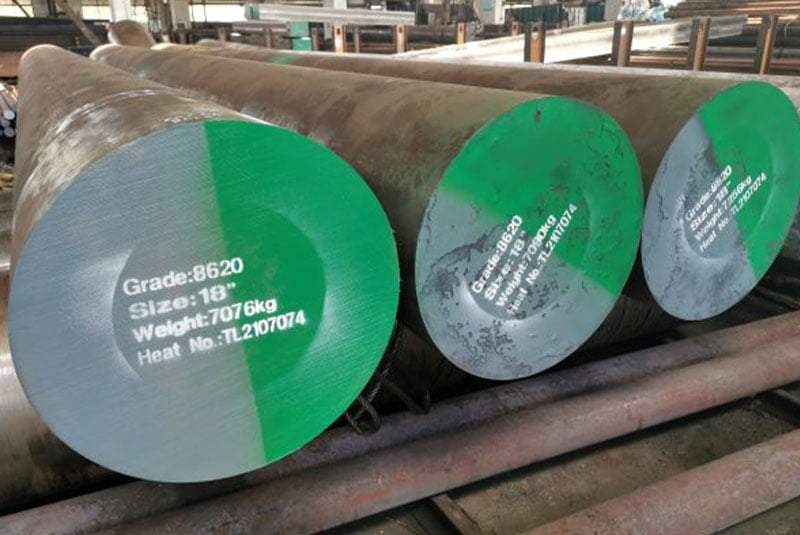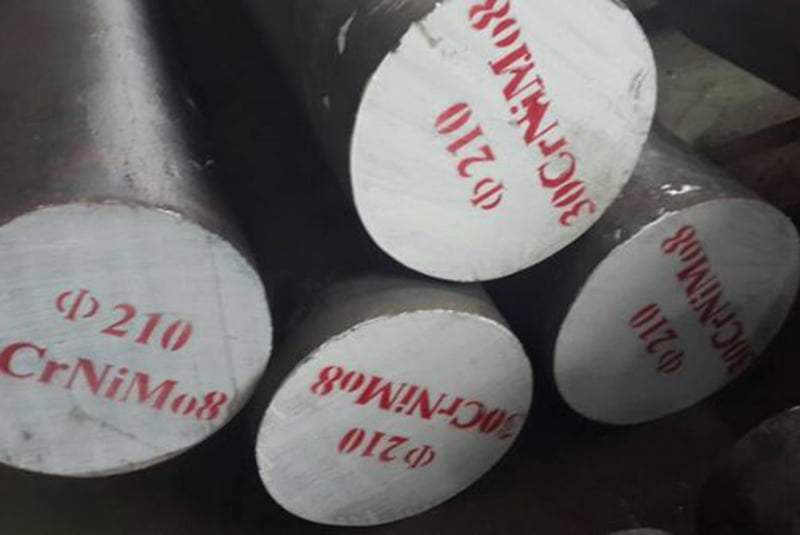Introduction
Alloy steel is a term that refers to a broad range of steels that have been alloyed with various elements to improve their mechanical properties and performance. From construction and automotive industries to aerospace and tool manufacturing, alloy steel plays a crucial role in numerous applications. This comprehensive guide aims to answer the question, “What is alloy steel?” and explain why it is important across different industries.
What is Alloy Steel?

Definition and Composition
Alloy steel is a type of steel that is alloyed with various elements in addition to carbon. These alloying elements, such as manganese, chromium, nickel, and molybdenum, are added in specific proportions to achieve certain desirable properties that are not present in plain carbon steel.
- Definition: Steel alloyed with one or more elements to enhance properties.
- Common Alloying Elements: Manganese, chromium, nickel, molybdenum, vanadium, silicon.
Types of Alloy Steel
Alloy steels are generally categorized into two types based on their composition and the amount of alloying elements they contain:
- Low-Alloy Steel: Contains a lower percentage of alloying elements (generally less than 5%). These steels are used for applications requiring moderate strength and toughness.
- High-Alloy Steel: Contains a higher percentage of alloying elements (typically more than 5%). These steels are known for their high strength, hardness, and resistance to wear and corrosion.
Table: Common Alloying Elements and Their Effects
| Element | Effect on Steel |
|---|---|
| Manganese | Increases toughness and hardenability |
| Chromium | Enhances hardness, wear resistance, and corrosion resistance |
| Nickel | Improves toughness and impact resistance |
| Molybdenum | Increases strength at high temperatures |
| Vanadium | Improves strength and wear resistance |
| Silicon | Enhances strength and magnetic properties |
Why is Alloy Steel Important?
Enhanced Mechanical Properties
Strength and Hardness
One of the primary reasons for alloying steel is to increase its strength and hardness. Alloy steel can withstand higher stress and is more resistant to deformation compared to plain carbon steel.
- Increased Strength: Suitable for high-stress applications.
- Enhanced Hardness: More resistant to wear and abrasion.
Toughness and Ductility
Alloy steels are designed to be tougher and more ductile than plain carbon steels. This means they can absorb more energy before fracturing and can be deformed without breaking, making them ideal for structural applications.
- Improved Toughness: Absorbs more energy before fracturing.
- Better Ductility: Can be deformed without breaking.
Improved Corrosion Resistance
Alloying elements such as chromium and nickel significantly enhance the corrosion resistance of steel. This makes alloy steel suitable for use in harsh environments where exposure to moisture, chemicals, and other corrosive elements is a concern.
- Chromium: Forms a protective oxide layer to prevent rust.
- Nickel: Enhances resistance to corrosion and oxidation.
Versatility in Applications
Construction Industry
In the construction industry, alloy steel is used for building structures, bridges, and reinforcing bars. Its strength, toughness, and resistance to environmental factors make it a preferred material for these applications.
- Building Structures: Provides strength and stability.
- Bridges: Offers durability and resistance to environmental factors.
- Reinforcing Bars: Enhances the strength of concrete structures.
Automotive Industry
Alloy steel is widely used in the automotive industry for manufacturing components such as gears, shafts, and axles. Its high strength and wear resistance ensure the durability and reliability of these critical parts.
- Gears and Shafts: Withstands high stress and wear.
- Axles: Ensures durability and reliability.
Aerospace Industry
In the aerospace industry, alloy steel is used to manufacture components that require high strength, toughness, and resistance to high temperatures. Examples include landing gear, engine parts, and structural components.
- Landing Gear: Provides high strength and toughness.
- Engine Parts: Withstands high temperatures.
- Structural Components: Ensures safety and reliability.
Tool Manufacturing
Alloy steel is essential in the tool manufacturing industry due to its hardness and wear resistance. It is used to produce cutting tools, drill bits, and other equipment that require long-lasting sharpness and durability.
- Cutting Tools: Maintains sharpness and durability.
- Drill Bits: Offers long-lasting performance.
How is Alloy Steel Made?

Production Process
The production of alloy steel involves several key steps:
Melting: The base steel is melted in a furnace.
Alloying: Desired alloying elements are added to the molten steel in specific proportions.
Casting: The molten alloy steel is poured into molds to form billets, ingots, or slabs.
Forming: The cast steel is formed into the desired shape through processes such as rolling, forging, or extrusion.
Heat Treatment: The formed steel undergoes heat treatment to enhance its mechanical properties.
Heat Treatment
Heat treatment is a crucial step in the production of alloy steel. It involves heating the steel to a specific temperature and then cooling it at a controlled rate. This process alters the microstructure of the steel, enhancing its mechanical properties such as hardness, strength, and toughness.
- Annealing: Softens the steel and improves ductility.
- Quenching: Increases hardness and strength by rapid cooling.
- Tempering: Reduces brittleness and enhances toughness by reheating and then cooling.
Table: Common Heat Treatment Processes and Their Effects
| Process | Description | Effect on Steel |
|---|---|---|
| Annealing | Heating and slow cooling | Softens steel, improves ductility |
| Quenching | Heating and rapid cooling | Increases hardness and strength |
| Tempering | Reheating after quenching, then cooling | Reduces brittleness, enhances toughness |
Conclusion
Alloy steel is a versatile and essential material used across various industries due to its enhanced mechanical properties, improved corrosion resistance, and adaptability. Understanding what alloy steel is and why it is important can help you make informed decisions when selecting materials for different applications. Whether it’s for construction, automotive, aerospace, or tool manufacturing, alloy steel provides the strength, durability, and performance needed to meet demanding requirements.
FAQ
What is alloy steel and how is it different from carbon steel?
Alloy steel is a type of steel that is alloyed with various elements such as manganese, chromium, nickel, and molybdenum to improve its mechanical properties. Unlike carbon steel, which primarily contains carbon and iron, alloy steel includes additional elements that enhance strength, toughness, and corrosion resistance.
What is alloy steel used for?
Alloy steel is used in a wide range of applications due to its enhanced properties. It is commonly used in the construction industry for building structures and bridges, in the automotive industry for manufacturing gears and shafts, in aerospace for making landing gear and engine parts, and in tool manufacturing for producing durable cutting tools. So, what is alloy steel? It is a versatile material that provides superior performance in various industries.
What is the composition of alloy steel?
The composition of alloy steel varies depending on its intended use, but it typically includes iron, carbon, and one or more alloying elements such as manganese, chromium, nickel, molybdenum, vanadium, and silicon. These elements are added in specific proportions to achieve desired properties. Understanding what is alloy steel requires knowing how these elements contribute to its performance.
What is the difference between low-alloy steel and high-alloy steel?
Low-alloy steel contains a lower percentage of alloying elements (generally less than 5%) and is used for applications requiring moderate strength and toughness. High-alloy steel contains a higher percentage of alloying elements (typically more than 5%) and is known for its high strength, hardness, and resistance to wear and corrosion. So, what is alloy steel in terms of its categories? It can be either low-alloy or high-alloy based on the alloying content.
What is alloy steel’s role in the aerospace industry?
In the aerospace industry, alloy steel is crucial for manufacturing components that require high strength, toughness, and resistance to high temperatures. It is used for making landing gear, engine parts, and other structural components to ensure the safety and reliability of aircraft. So, what is alloy steel’s significance in aerospace? It ensures high performance and safety in critical applications.
What is the importance of heat treatment in alloy steel production?
Heat treatment is essential in alloy steel production as it enhances the mechanical properties of the steel. Processes such as annealing, quenching, and tempering alter the microstructure of the steel, improving its hardness, strength, and toughness to meet specific requirements. So, what is alloy steel’s key process? Heat treatment plays a vital role in optimizing its properties.
What is alloy steel’s advantage over plain carbon steel?
Alloy steel has several advantages over plain carbon steel, including higher strength, improved hardness, better toughness, and increased corrosion resistance. These enhanced properties make alloy steel suitable for more demanding applications and environments. So, what is alloy steel’s edge over carbon steel? It offers superior performance and durability.
What is alloy steel’s role in the automotive industry?
In the automotive industry, alloy steel is used to manufacture components such as gears, shafts, and axles due to its high strength and wear resistance. These properties ensure the durability and reliability of critical automotive parts. So, what is alloy steel’s function in automotive? It provides essential durability and performance for vehicle components.
What is the environmental impact of using alloy steel?
Using alloy steel can be environmentally beneficial as its enhanced durability and corrosion resistance can lead to longer-lasting products, reducing the need for frequent replacements and minimizing waste. Additionally, many alloy steels are recyclable, contributing to sustainable material use. So, what is alloy steel’s environmental benefit? It promotes sustainability through durability and recyclability.
What is the best way to maintain alloy steel products?
Maintaining alloy steel products involves regular inspections for signs of wear or corrosion, proper cleaning to remove contaminants, and following the manufacturer’s guidelines for maintenance and care. Heat treatment may also be required to restore the steel’s properties if it undergoes significant stress or wear. So, what is alloy steel maintenance? It includes regular inspections, cleaning, and sometimes heat treatment to ensure longevity.
